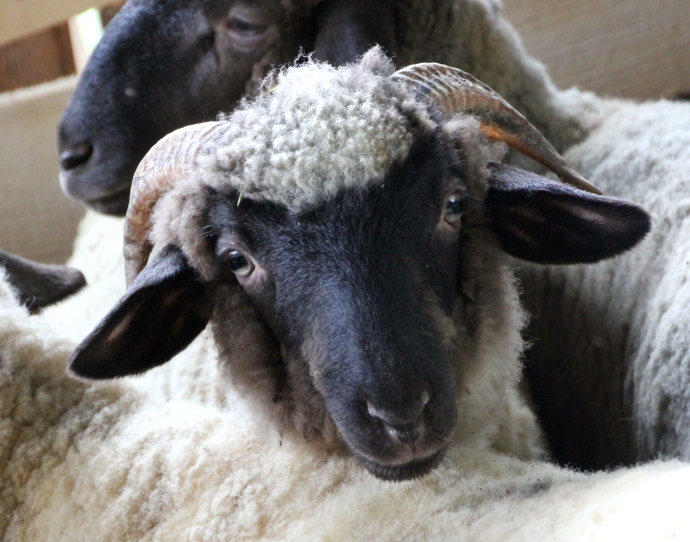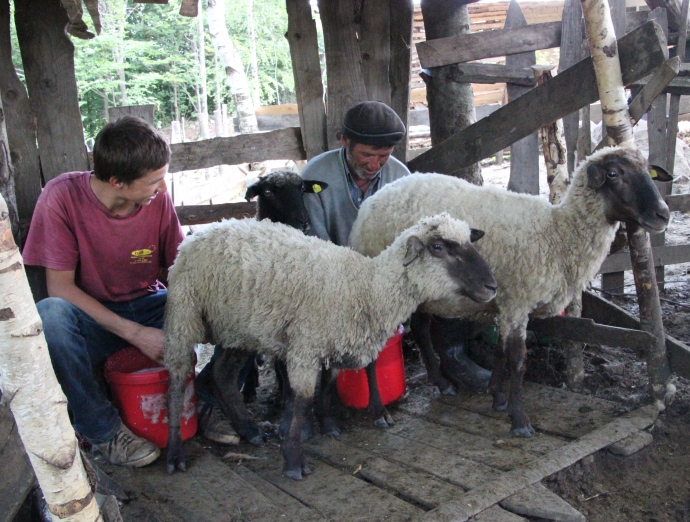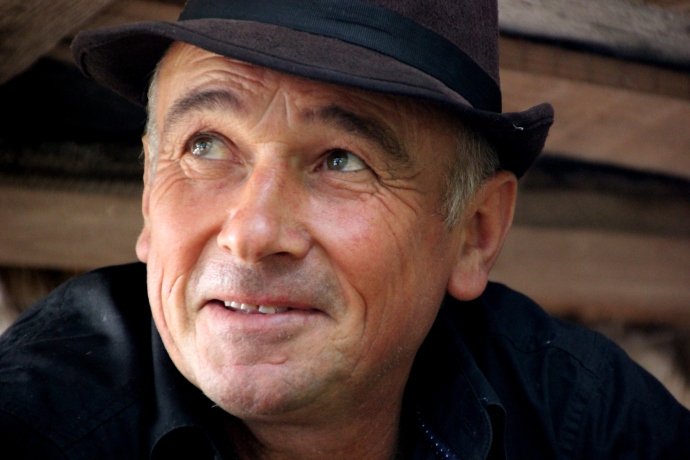 The day we went to see the sheepfolds of Lepsa, Romania was my favorite day ever (til tomorrow). The impossible-to-spell-or-pronounce region of Vrancioaia is located between the Black Sea and Transylvania, on the junction of two tectonic plates and is prone to earth-quakes, has salty soil from when it used to be under the ocean, and is retouched-calendar-photo perfect.
The day we went to see the sheepfolds of Lepsa, Romania was my favorite day ever (til tomorrow). The impossible-to-spell-or-pronounce region of Vrancioaia is located between the Black Sea and Transylvania, on the junction of two tectonic plates and is prone to earth-quakes, has salty soil from when it used to be under the ocean, and is retouched-calendar-photo perfect.
For centuries, this has been sheep-breeding & cheese-making country but with anemic production of the local sheep breed and new cheese standards imposed by the EU (Romania became a member in 2007 and had five years to get up to speed) that traditional way of life is fading fast. People can’t make a living on the farm, and young people are fleeing to Europe and the cities to find jobs.
So Heifer and the 2700-member Mountain Farmers Federation have joined forces to help these sheep-breeders transition to a free market economy. The plan is to revitalize the Red-face Tigaia breed with Black-face meat rams and fresh Red-faced ewes … and train farmers to meet new hygienic standards of cheese production.
It sounds good on paper, but you really don’t get it ‘til you see the sheepfold in action — and then it’s like something right out of Laura Ingalls Wilder’s books, complete with hay harvested with scythes and fashioned into fat haystacks that will last through the long, hard winter.
From April til October each year, Ion (John) and Dorica Cobzaru live up in the sheepfold with a few other shepherds and seven big dogs, taking care of their own sheep and 100 of their neighbors’ goats and sheep.  They rise at 4:30 am, milk the flock at 6 am, take the herd out to pasture and then make the sheep cheese (there is no electricity to refrigerate the milk so it has to be immediately boiled and made into cheese). The flock will produce 8 kilos of cheese each milking: (at noon and 8 pm), and in between there is hay to be harvested, sheep to be shorn, and animals to be herded and fed.
They rise at 4:30 am, milk the flock at 6 am, take the herd out to pasture and then make the sheep cheese (there is no electricity to refrigerate the milk so it has to be immediately boiled and made into cheese). The flock will produce 8 kilos of cheese each milking: (at noon and 8 pm), and in between there is hay to be harvested, sheep to be shorn, and animals to be herded and fed.  During the night, the shepherds make big fires to keep away wolves, bears and wild boars, the seven dogs sleep around the perimeter of the herd, and John sleeps outside to keep guard against the wily wolves.
During the night, the shepherds make big fires to keep away wolves, bears and wild boars, the seven dogs sleep around the perimeter of the herd, and John sleeps outside to keep guard against the wily wolves.
For their hours of labor, the shepherds will keep 3 kilos out of every 10 kilos of sheep cheese they make, and middlemen regularly come to the sheepfold on horseback to pick up the freshly made, immensely popular cheese to sell in the local markets.
With Heifer’s gift of 10 new sheep and 1 new ram to each of 50 families in the valley (plus the support of the local veterinarian and town mayor), the project is producing bigger, fatter lambs that are far more profitable for the farmer. Ewes can get pregnant sometime before their second year and will have 2-3 babies a year for about 8 years. Male lambs are sold at 2-3 months and the fatter and sweeter they are (black-faced lambs are reputedly delicious), the more income they’ll bring to the farmer.
And with that income, the farmers can work together (never use the word “collectively” in post-communist Romania) to improve hygiene standards in making sheep cheese, establish better routes to market for wool, leather, milk and lamb, and make Lepsa a place where a farmer can make a living.
John went to Italy three times to work before he decided, “If I’m going to be poor, I might as well be poor in my own country.” His son Adrien, 21, just returned from picking strawberries in Italy and is happy to be back in the fold.
With the new sheep from Heifer and a new sense of hope in the valley, maybe all the farmer boys of Lepsa can grow up to be prosperous in their own country.








